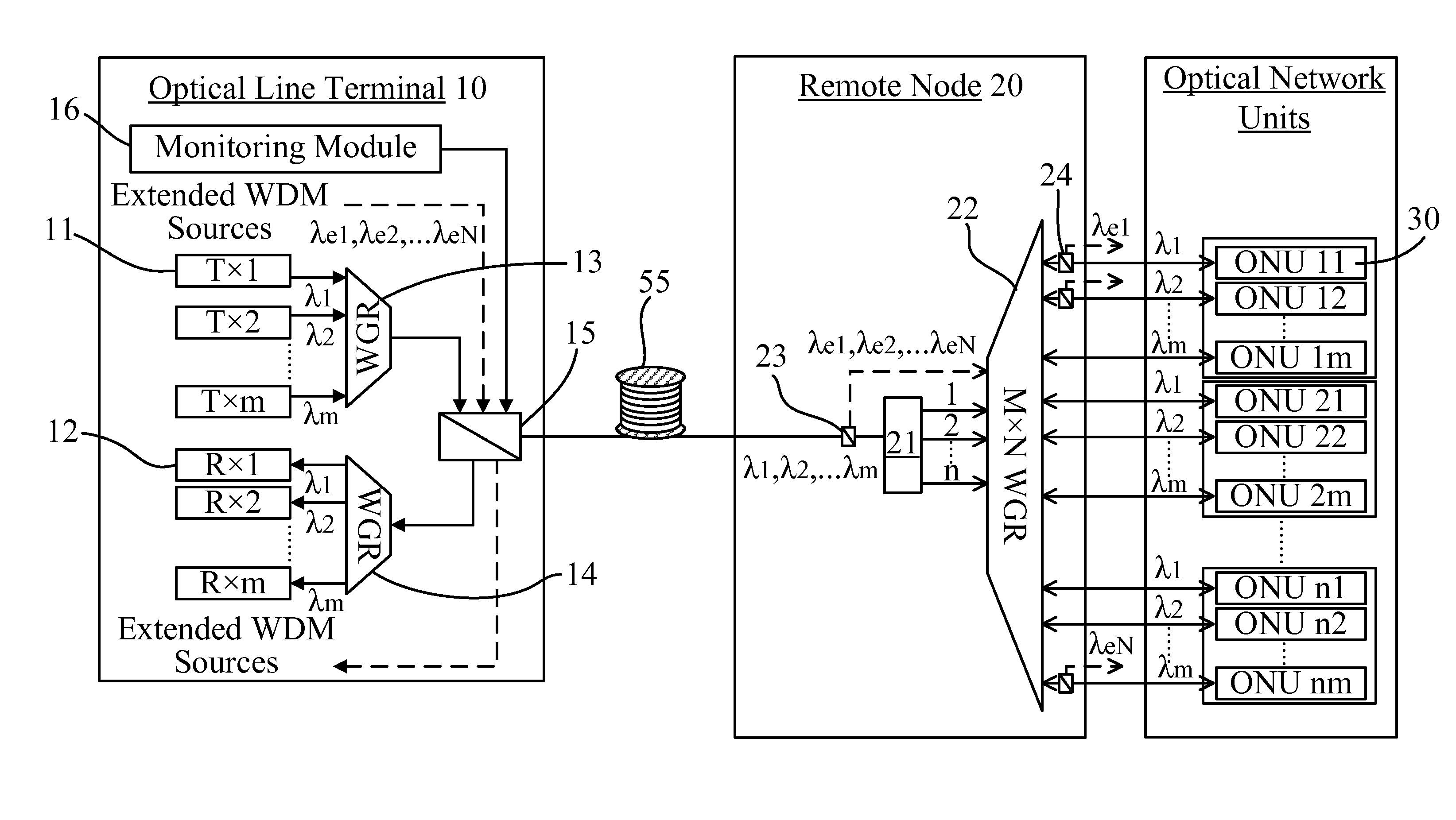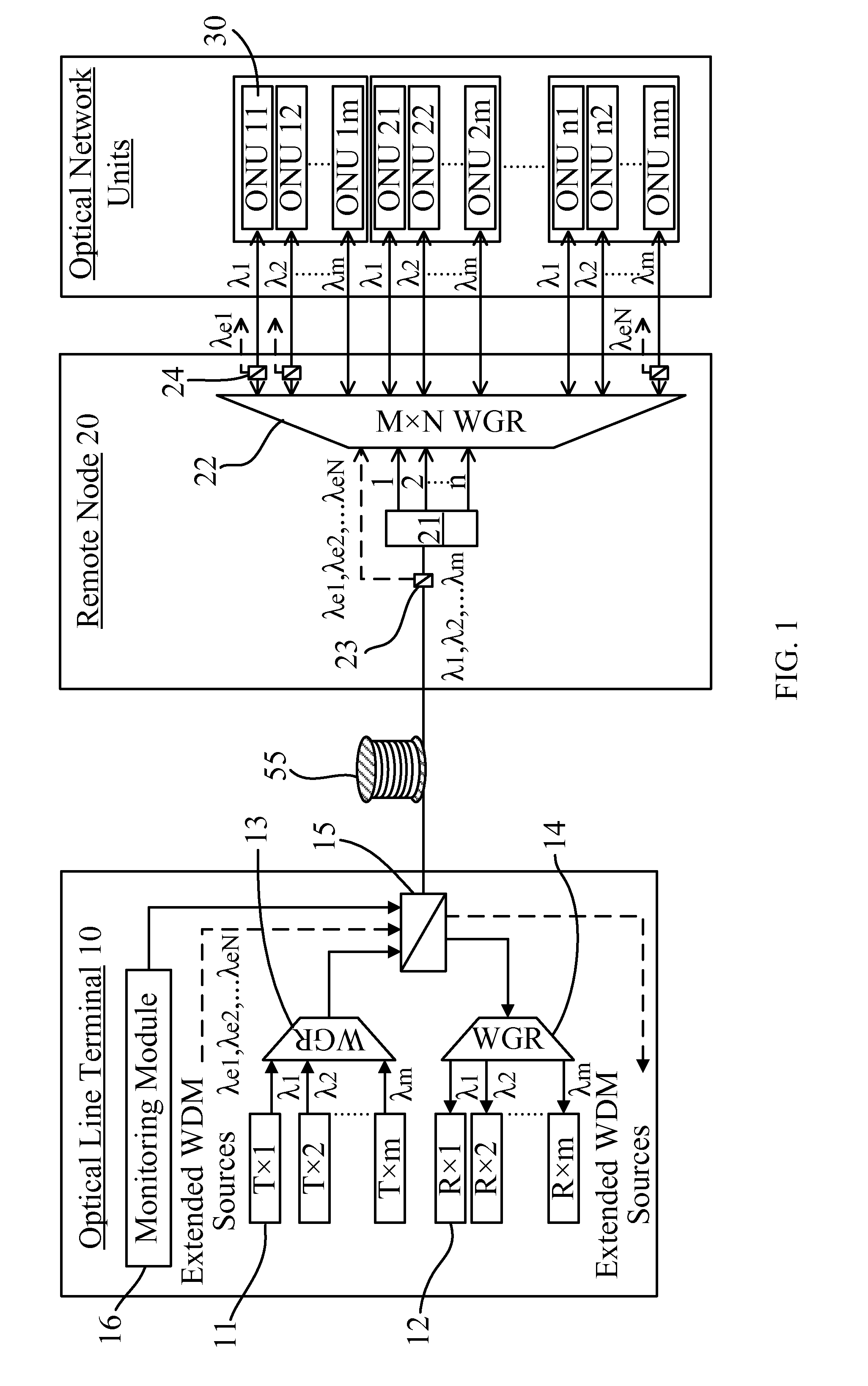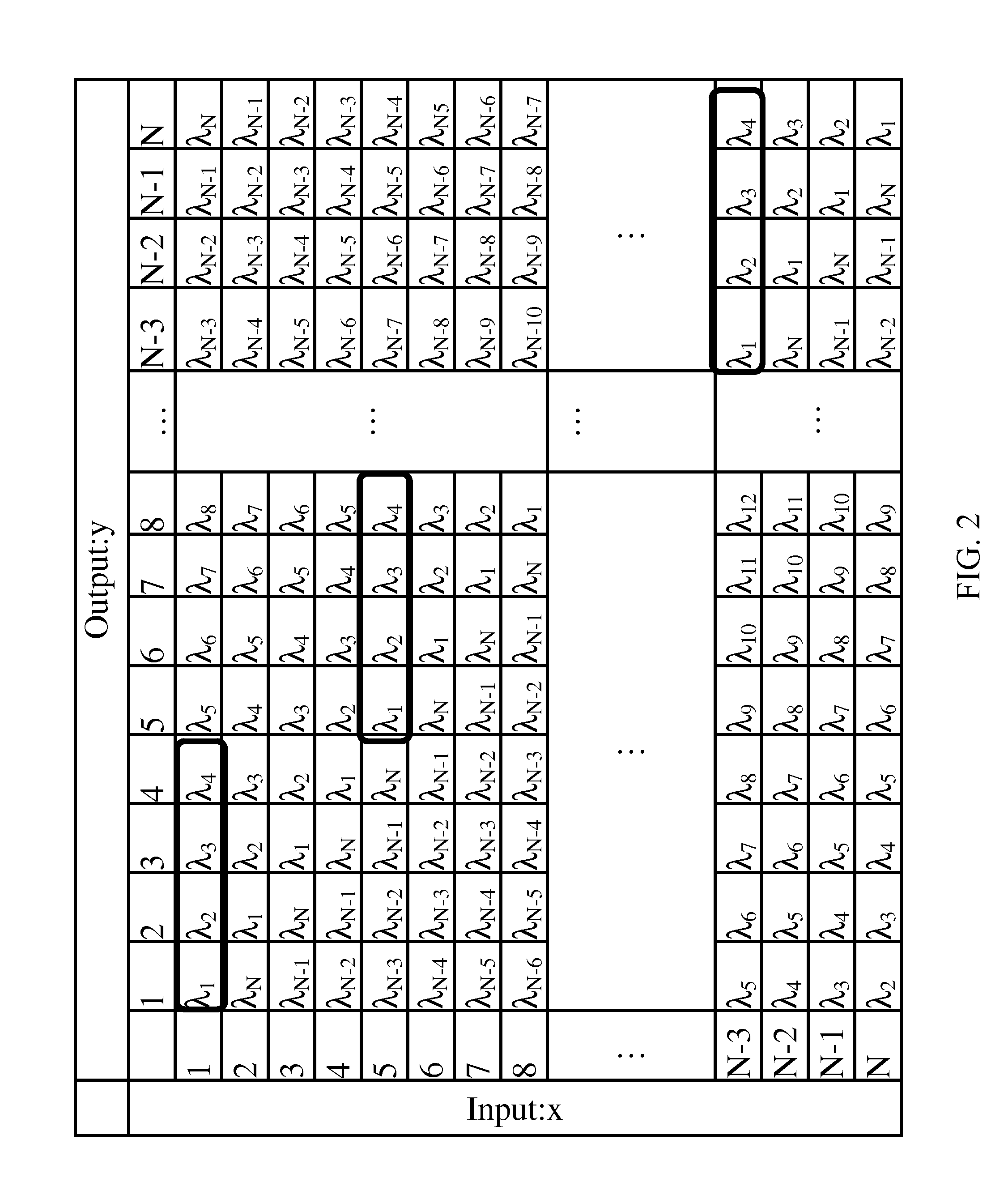Time/wavelength-division multiplexed passive optical network (TWPON)
a passive optical network and time/wavelength division technology, applied in the field of passive optical networks, can solve the problems of increasing the cost of using higher speed transceivers, the structure of tdm-pons may not meet the needs, and the power budget might be a problem, so as to increase the transmission capacity, and reduce the number of wavelengths
- Summary
- Abstract
- Description
- Claims
- Application Information
AI Technical Summary
Benefits of technology
Problems solved by technology
Method used
Image
Examples
first embodiment
[0029]Referring to FIG. 1, the TWPON of the present invention further comprises a wavelength band filter 23 disposed at the RN 20. The wavelength band filter 23 is coupled to the optical splitter 21 and the WGR 22. The wavelength band filter 23 can make the mixed optical signal {λ1, λ2, . . . λm} from the OLT 10 to pass the optical splitter 21 and make another mixed optical signal {λe1, λe2, . . . λeN} from the OLT 10 to pass one of the input ports of the WGR 22 such that the mixed optical signal {λ1, λ2, . . . λm } is merely allowed to enter the optical splitter 21 and said another mixed optical signal {λe 1, λe2, . . . λeN} is merely allowed to enter one of the input ports of the WGR 22. Moreover, the WGR 22 will respectively output component signals of said another mixed optical signal {λe1, λe2, . . . λeN} to predetermined ONUs 30. As shown in FIG. 1, a WDM band filter 24 may be arranged between each output port of the WGR 22 and corresponding ONU 30. The WDM band filter 24 is u...
second embodiment
[0039]A channel fault monitoring (CFM) module 16 located at the OLT 10 can be utilized to locate fiber breaks among distribution fibers. In the present invention, the channel fault monitoring can follow any of the signal paths of the three classes of services by using a wavelength band that is an integer multiplicity of λFSR away from the signal band and a suitable band filter. However, it also can merely use the Hybrid PON path because of its compromised optical bandwidth and splitting loss for the monitoring signal. This can be implemented by using a tunable laser or a broadband light source that covers an optical bandwidth of n wavelengths rather than N wavelengths. In such a manner, the number of used wavelengths for the channel fault monitoring is reduced efficiently. If the number of the shared ONUs 30 is relatively small (e.g, m=4), the OTDR should be able to resolve the reflected signals or the distribution fibers can easily arranged to have different lengths among the share...
fourth embodiment
The advantage of the present invention is that the TDM-PON transmission does not have extra insertion loss from the WGR 28.
PUM
 Login to View More
Login to View More Abstract
Description
Claims
Application Information
 Login to View More
Login to View More - R&D
- Intellectual Property
- Life Sciences
- Materials
- Tech Scout
- Unparalleled Data Quality
- Higher Quality Content
- 60% Fewer Hallucinations
Browse by: Latest US Patents, China's latest patents, Technical Efficacy Thesaurus, Application Domain, Technology Topic, Popular Technical Reports.
© 2025 PatSnap. All rights reserved.Legal|Privacy policy|Modern Slavery Act Transparency Statement|Sitemap|About US| Contact US: help@patsnap.com



